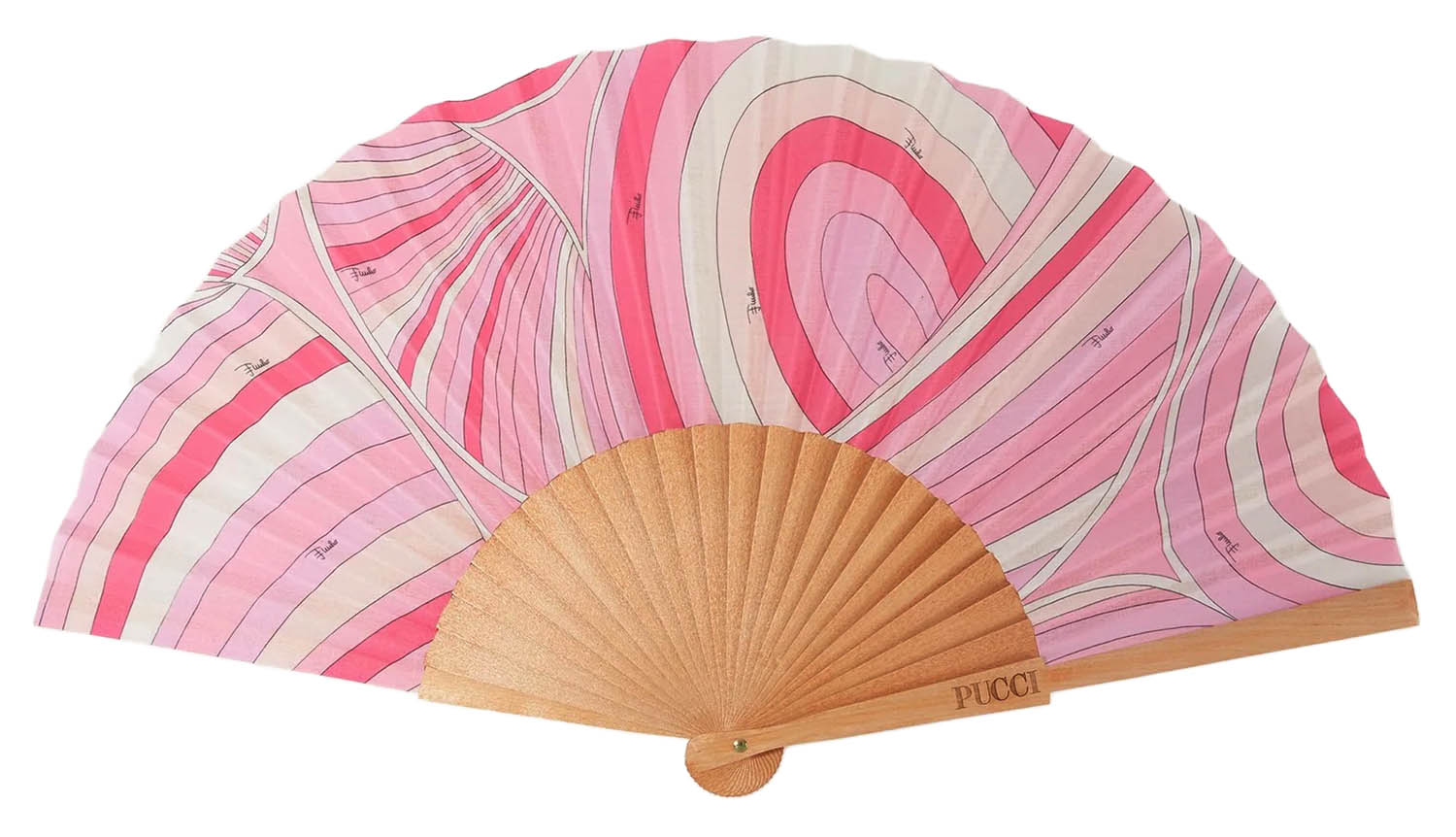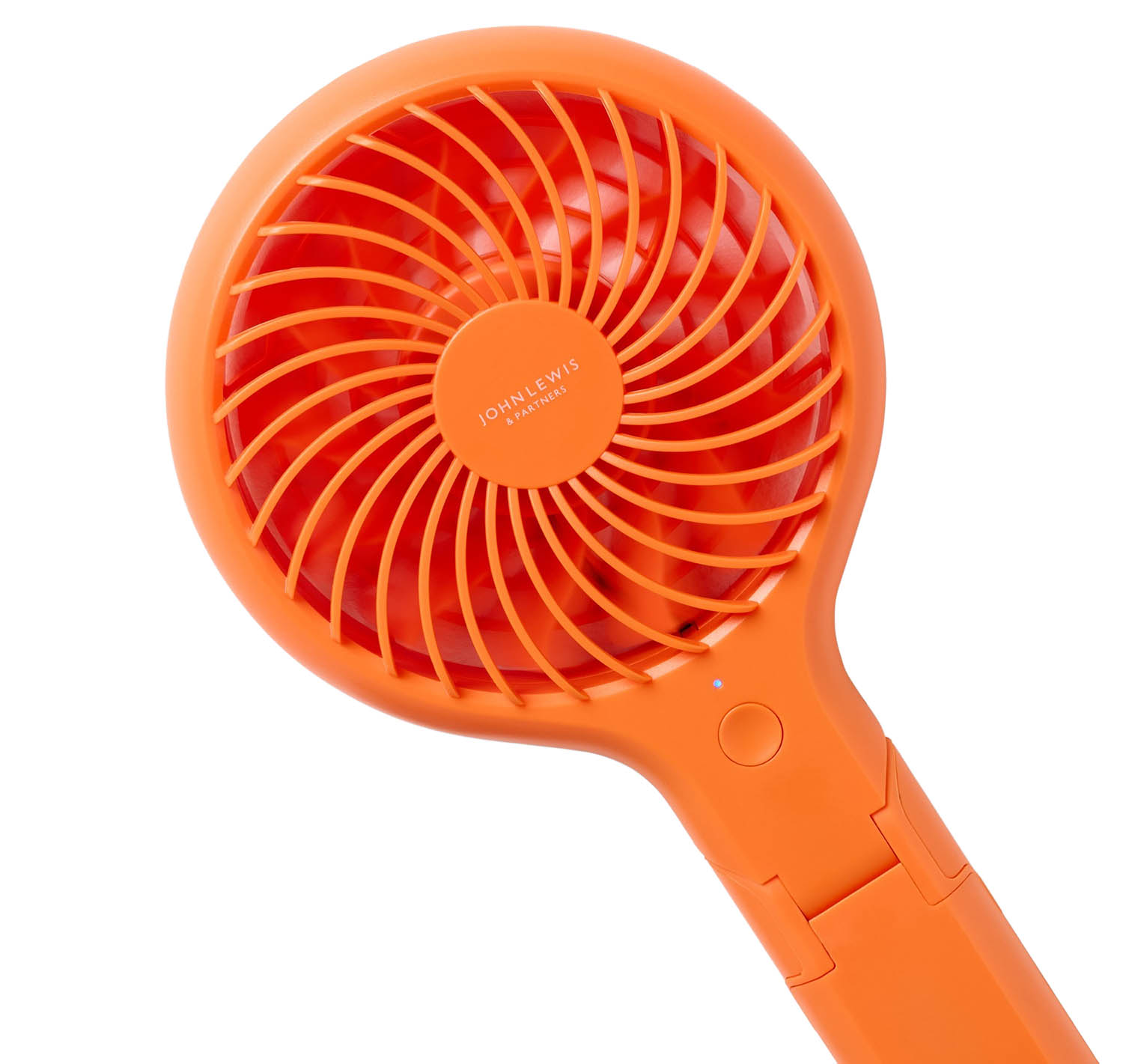Whether fluttered by a Spanish noblewoman under a lace mantilla or waved today inside a crowded tube carriage, a handheld fan is a useful tool for the flirtatious: a peek, a flick of the wrist … and the eyes have disappeared again.
Fabric fans are now back in large numbers in Britain and commanding some chilling prices. Designer versions, costing as much as £400, are pushing back the tide of expensive electronic gadgetry, functioning as handy indicators of both good taste and a healthy bank balance.
A pretty pink Pucci fan will set you back £150, while Aspinall’s cotton and birchwood Edwardian design comes with a tan leather case for a mere £125.

“There’s a boom, certainly. I see people going about with them all the time now,” said Hélène Alexander, who founded the Fan Museum in Greenwich in 1991.
“We sell them, as well as exhibiting them, and they are extremely popular. I suppose we have climate change to thank. But it is not like the 18th century when they were just for the upper echelons. Today everyone can have one. And I don’t mind the electronic ones either. I am sure they are effective.”
In fact, the science behind even a simple handheld fan is quite complex, involving evaporation, convection and wind chill. Hot bodies release heat to maintain a stable core. A breeze passing over the skin expedites this process, while the transfer of warmth makes the moving air feel cool. Unlike an electronic wearable neck fan (£15 from John Lewis) or an electric handheld version (£12), you don’t have to charge them overnight.

The fashion for fans has all but died out more than once. After a European heyday before the French Revolution, they returned early last century. Now high temperatures have given manufacturers a fresh boost.
The first death of the trend for fans in the 19th century caused an almost total retreat of the craft. It was revived in a modern “golden era”, during the art nouveau and art deco periods. Design houses such as Boucher and Fragonard set the standard.
The earliest fans, used in Japan in the 4th and the 5th centuries BC, were supposedly inspired by the movement of a bat’s wing. The Portuguese brought them back from the east and then Catherine de’ Medici introduced them to the salons of Italy and France.
French artisans developed delicate folding fans from the basic, elegant Asian “brisé” models. Sometimes, 20 craftsmen would work on one piece, the antique-fan restorer Yolaine Voltz has recently claimed, explaining the high prices reached at auction.

Emma Raducanu
This Parisian tradition earned prestigious “intangible cultural heritage” status five years ago. The fans sometimes had hidden mechanisms that revealed the identity of a lover at the push of a button. In 2012, a fan with a built-in music box sold for more than £325,000 at a sale in Geneva.
Alexander, who is now in her 90s, presides over 4,000 pieces at her Greenwich museum but retains a soft spot for rare Japanese fans. One of the wooden sort, common in brothels, opens both ways, she said. It is often decorated with tiny flowers on one side, while a “secret” second side is painted with lewd scenes.
Fans have been closely linked with sex long before the ostrich feather variety ever obscured a stripper. In France, a fan was initially called a “paravent de la pudeur”, or modesty screen. It was even suggested that, like the fig leaf, their invention marked the end of human innocence.
Photographs by Karwai Tang/WireImage, Clive Brunskill/Getty

